Foundation Plugin
-
Version 1.5.7b - 03.05.2020
- Updated the polyline stemwall draw tool to terminate (point selection) with the "End" key instead of the "Enter" key.
- Updated the strip footing draw tool to terminate (point selection) with the "End" key instead of the "Enter" key.
For now the point selection termination will be either the down arrow or the "End" key. Using the "Enter" key causes a conflict when the user is manual entering a dimension for a segment length (key in the dimension and then click enter). Until I can figure out how to resolve this conflict this will be the key assignment for terminating both polyline stemwall and strip footings.
-
Version 1.5.7c - 03.05.2020
- Added the "Enter" key method to the strip footing and polyline stemwall draw tools for point selection termination.
After a couple of tries I think I've finally got it right now. One should be able to use the Enter/Return key to terminate point selection as well as still use the down arrow (for users who are in the habit of using the down arrow now). I apologize on the back and forth on this fix, sometimes things just don't go as smoothly as planned.
-
Version 1.5.8 - 04.27.2020
- Added a Global Reset button in the General tab of the Global Settings.
- Plugin files switched from .rbs to .rbe encryption.
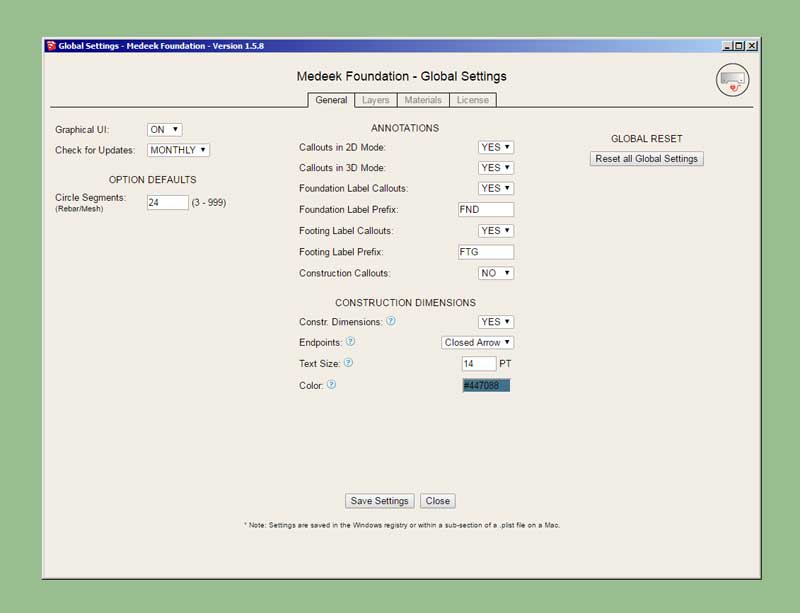
-
Version 1.5.9 - 05.15.2020
- Fixed a bug when the Auto Assign Materials parameter was turned off.
-
Version 1.6.0 - 05.28.2020
- Added a footing concrete layer in the Global Settings under the "Layers" tab.
- Fixed a bug for metric templates with the strip footing tool and the polyline stemwall tool.
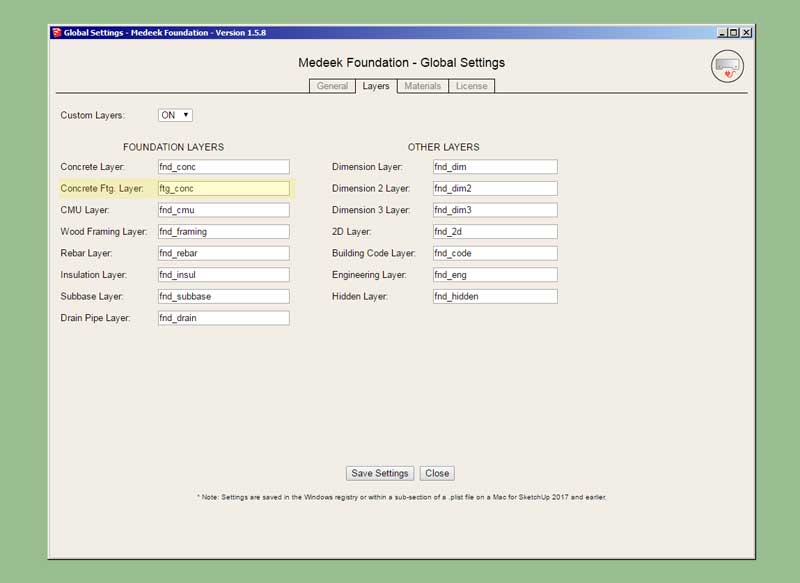
Note, that if you want the footing concrete layer to remain the same as the rest of the foundation (ie. stemwall) you can always assign it to the same layer name: "fnd_conc"
Also note, that any and all of these layer names are user configurable, the names shown are just default names I have assigned, the user can utilized their own naming convention that suites their workflow.
-
After giving this suggestion some additional thought:

I think I will introduce two additional parameters for stemwall foundations which will make them more applicable for use as retaining walls in foundation design.
The two parameters will be:
Ftg. Bar Development: None, Hook, Full Ext., Full Int.
Ftg. Offset: 0.0 in (default)Currently footings are drawn symmetrically with respect to the foundation wall, this will enable the user to offset the footing in or out (+/-).
-
Version 1.6.1 - 08.31.2020
- Added a footing offset parameter to polyline stemwalls.
- Enabled options for 90 deg. footing hooks for vertical rebar in polyline stemwall.
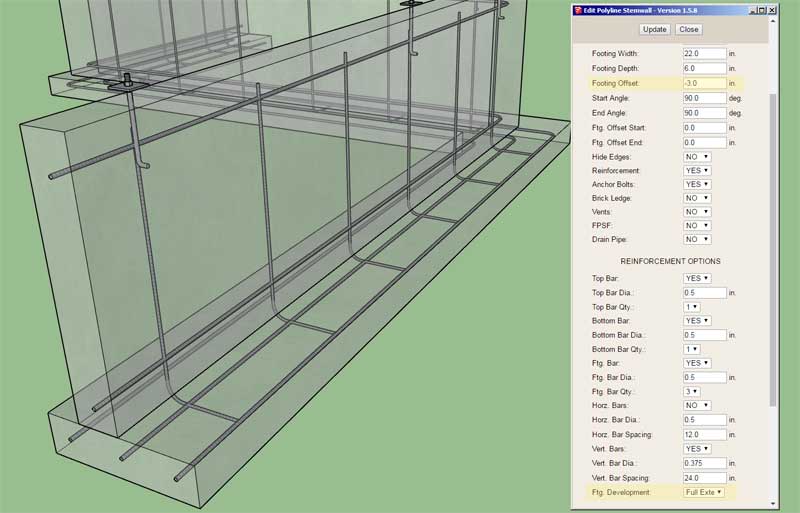
View model here:
3D Warehouse
3D Warehouse is a website of searchable, pre-made 3D models that works seamlessly with SketchUp.
(3dwarehouse.sketchup.com)
-
Version 1.6.2 - 10.09.2020
- Added a "Refresh Licensee Data" button within the License tab of the Global Settings.

-
@medeek said:
Version 1.6.2 - 10.09.2020
- Added a "Refresh Licensee Data" button within the License tab of the Global Settings.

your website isn't reflecting the new version yet
-
It should be showing version 1.6.2 now.
-
@medeek said:
It should be showing version 1.6.2 now.
not yet, and I did press "F5" so the page would load fresh

-
Try it now.
-
-
Version 1.6.3 - 10.22.2020
- Fixed a bug in the strip footing "Outline" edit menu.
-
Version 1.6.4 - 01.11.2021
- Added the option for post bases for the (Post & Beam) Interior Bearing tool: BC40, BC60.

Post base hardware added per customer request.
-
Version 1.6.4b - 01.14.2021
- Added the following additional post bases to the Interior Bearing tool: ABU44, ABU66.
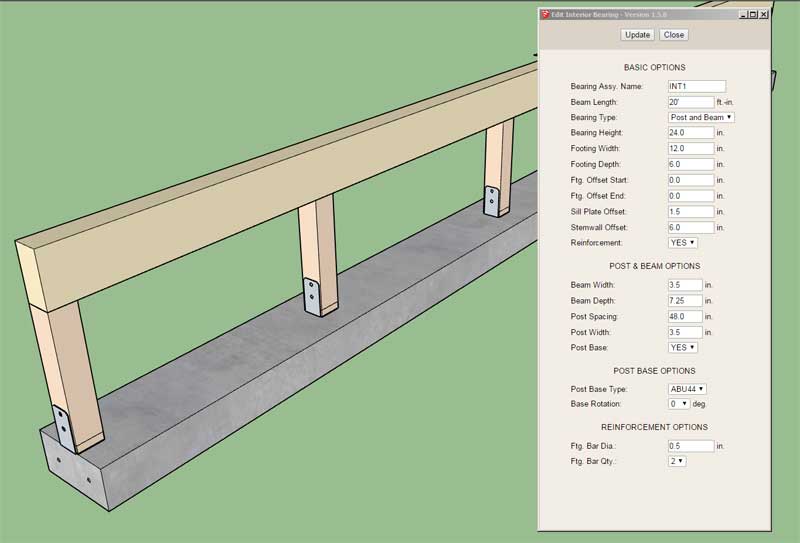
Two additional post bases added per customer request.
-
When the foundation segment lengths in a polyline stemwall foundation are too short this is what you get (notice the anchor bolt placement):

I'm working up some additional logic to properly deal with anchor bolt placement with short segment lengths.
-
Version 1.6.5 - 02.09.2021
- Fixed a bug with anchor bolt placement for polyline stemwalls.
- Added an option for a zero depth footing for polyline stemwalls, which eliminates the footing for this foundation type.
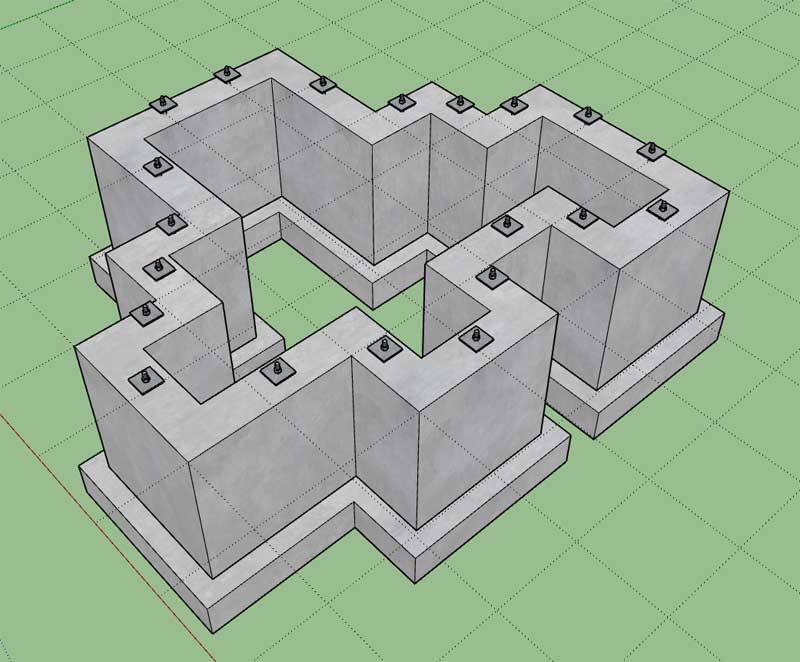
By setting the depth of the footing to zero you can eliminate the footing from a polyline stemwall, so only the stemwall portion of the foundation is drawn. This is per customer request.
Also the algorithm for anchor bolt placement for polyline stemwalls is greatly improved, however there can always be further improvements, any feedback is always appreciated.
-
Version 1.6.6 - 02.12.2021
- Added logic to the final assembly routine to allow for electrical components (Medeek Electrical) to be retained within all foundation assemblies.

-
Version 1.6.7 - 03.07.2021
- Fixed a bug with brick ledges (and drain pipe) for slab-on-grade foundations.
Advertisement









